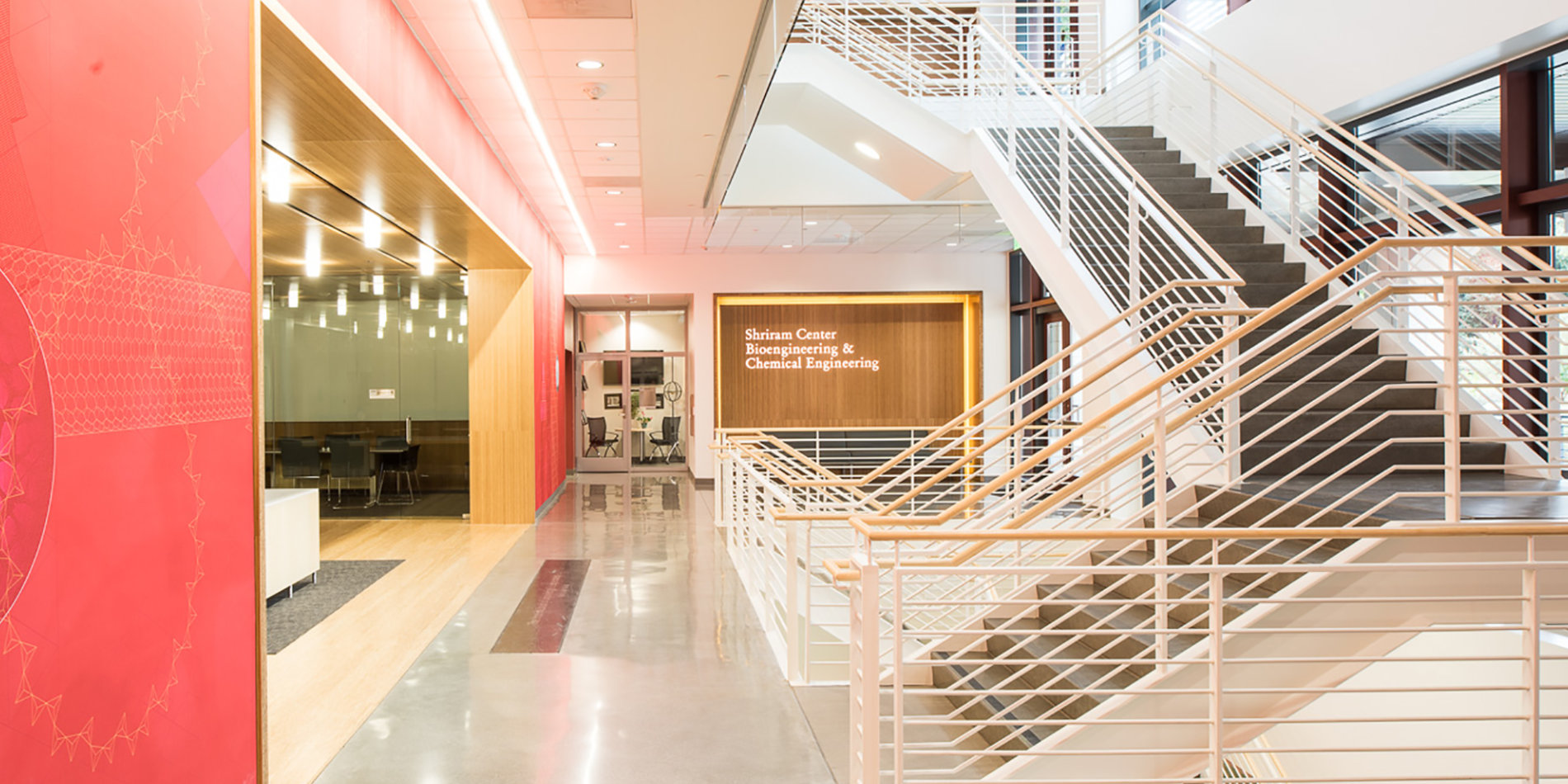Bioengineering Department announces new major, Biomedical Computation
Imagine yourself an undergraduate at Stanford eager to make a mark in the growing field at the confluence of human biology, engineering and computer science. It’s a new world where new drugs, medical treatments and understandings about the way life works are shaped almost exclusively using computer models.
It’s the end of your sophomore year, a time when students traditionally declare a major. Where do you turn? You could opt for human biology and get hands-on experience working with the building blocks of life. You could choose engineering and the primacy of practical solutions. Or, you could choose computer science and unlock hidden insights in big data and learn the artistry of algorithms and artificial intelligence. But could you find a single major dedicated to all three?
The answer to that question is now an unqualified “yes,” but it has been 15 years in the making. The Biomedical Computation major—BMC, for short—was founded as an interdepartmental program in the School of Engineering and graduated its first student in 2003. The Department of Bioengineering, a joint program of the School of Engineering and the School of Medicine, recently announced it would formally bring the offering into the department as a second undergraduate major.
“The BMC major started because students wanted to study two of the biggest revolutions in science in the last 50 years—namely, our understanding of biology and our capabilities in computation,” says Russ Altman, a professor and former chair of the Department of Bioengineering, and one of the founding faculty of the BMC major. “What started as an experiment is now a success.”
Bringing the Biomedical Computation major into the Department of Bioengineering, Altman says, guarantees that it can continue to evolve in response to emerging opportunities and needs in biology, medicine, statistics and computation.
“This is a specialized major for students who want to have the computer science background but want to delve deeply into the biology as well,” says Jennifer Cochran, associate professor and current chair of the Department of Bioengineering, who helped lobby for the major with the university administration.
While the final landing spot for the major was initially somewhat of an open question, to Cochran and colleagues, bioengineering was a logical and natural home for it.
“Its home is in bioengineering, but we are depending on faculty colleagues throughout the university to mold the major and ensure it serves a broad set of student interests and passions,” she says.
Young department, new discipline
Bioengineering itself is one of the university’s newest departments. It began in 2003 as a place that combined the life-saving purposes of medicine and the needs of biotechnology with the can-do pragmatism of engineering. The department boasts over 30 notable core faculty with a broad range of interests spanning areas including synthetic biology, medical devices and computational biology.
In its earliest days, the bioengineering department offered only graduate-level programs, but, as the department grew, so did the possibilities. The very first undergraduate major was offered in 2010 as an interdepartmental program. In 2015 the major was approved by the Faculty Senate in perpetuity, and as Stanford’s first new undergraduate major in more than 20 years.
BMC also started as an interdepartmental program in 2003, led by Altman and Daphne Koller, a former professor in computer science and co-founder of Coursera. The program genesis was catalyzed by then-undergraduate Amit Kaushal, who helped design the major and was its first graduate. He went on to complete his medical, doctoral and residency training at Stanford, and is currently an attending physician at the Palo Alto VA. He serves under Altman as director of the major.
“The growth and success of BMC is a testament to two attributes that make Stanford great—the belief in the importance of interdisciplinary study, and the willingness to experiment and innovate to keep undergraduates on the cutting edge,” says Kaushal.
BMC has graduated over 60 students to date. More than half have gone on to earn medical degrees or doctorates. Some, like Kaushal, do both. A few have gone on earn MBAs and legal degrees. And higher education is only part of the picture of opportunity. Graduates have landed prominent jobs at leading companies ranging from Apple, Google and Facebook to Goldman Sachs. More than half of the bioengineering and BMC undergraduate students are female, a proportion higher than in either broad engineering or medical disciplines.
Four tracks to the future
While BMC is the second official undergraduate major in bioengineering, it is by no means a lesser discipline. Technically, biomedical computation remains an interdepartmental program, but now has access to a breadth of departmental resources that will better support and enable scaling and expansion of the program.
BMC offers four tracks to incoming students: informatics; simulation; cellular/molecular biology; and human organs/organ systems. All include a capstone course and require 6 units of research. There is also a year-long honors thesis option. Students and advisors work together to define both the skills to be gained and the necessary courses to get to the finish line.
In the informatics track, students train their computers on mining and analyzing the growing database of information being collected through smartphones, wearable devices and other sources. Simulation involves modeling the real world as a way to speed new understandings of biological function and dysfunction. The cellular and molecular biology track emphasizes computationally based approaches to understanding cellular function, and the fourth focuses in a similar way on human organs and organ systems.
While the program is technologically and scientifically rigorous, it is not exclusive. Cochran emphasizes that any undergraduate at Stanford can and should be able to complete the degree without specialized training before entering the program.
“We’re training the next generation of bioengineers, students who are well-versed in computer science and biology,” Cochran says. “That’s a pretty amazing opportunity.”



